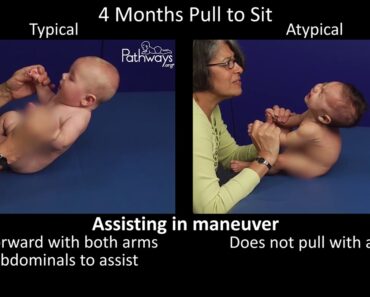image: Shutterstock
Williams syndrome, also known as Williams-Beuren syndrome, is a genetic condition characterized by learning problems, developmental delays, distinct facial appearance, unique personality traits, and cardiovascular issues. Both males and females are equally susceptible to it. Williams syndrome affects about 1 in 7500-10,000 individuals (1).
Read this post to understand the causes, symptoms, diagnosis, and treatment of Williams syndrome in babies.
At What Age Is Williams Syndrome Diagnosed?
Williams syndrome is usually diagnosed in infancy or early childhood. Most cases are diagnosed before the child turns four. However, in some cases, it may remain undetected until the child begins going to school (2).
What Causes Williams Syndrome?
Williams syndrome is caused by missing genetic material. About 26-28 genes get deleted from a specific region of chromosome 7, leading to this disorder. Generally, genes such as CLIP2, ELN, GTF2I, GTF2IRD1, and LIMK1 are among the deleted genes. The absence of these genes is considered to be the reason for the typical Williams syndrome characteristics and associated symptoms.
Below are the notable effects of the missing genes, causing the baby to develop characteristic features of Williams syndrome.
- The missing GTF2IRD1 is suspected to be the cause for the distinct facial characteristics.
- The absence of ELN is believed to be the possible cause behind connective tissue problems and cardiovascular diseases.
- The loss of CLIP2, GTF2I, and GTF2IRD1 is considered to be responsible for the characteristic behavior, learning difficulties, and spatial impairments.
The deletion is typically an accidental phenomenon that occurs due to unknown reasons in patients with no family history. In rare cases, individuals might inherit it from the parent affected by the syndrome. A parent, male or female, with the syndrome has about a 50% probability of passing it to their offspring. A single copy of the gene is sufficient for inheritance (3).
Signs And Symptoms Of Williams Syndrome
Every baby with Williams syndrome does not show all the symptoms. The severity and occurrence of the symptoms differ from person to person. Some symptoms become more apparent as the baby grows up.
The signs and symptoms of the syndrome can be divided into physical, cognitive, and behavioral characteristics (4) (5).
1. Physical characteristics
- Feeding difficulties: Babies may face problems in feeding due to weak muscle tone in the mouth and throat. Switching from bottle to solids might be difficult for them. They might also experience extended colic and crankiness.
- Facial and dental irregularities: Distinct facial features include a broad forehead, puffiness around the eyes, broad and flattened nose, chubby cheeks, wide mouth with plump lips, and small pointed chin. Teeth may be small, crooked, and malformed, with a misalignment in the upper and lower dental arches. Some babies might be born with microcephaly (smaller head than normal).
- Eye-related abnormalities: Infants may present a star-like pattern in the iris. The baby may have eye problems, such as strabismus with the inward turning of the eyes (infantile esotropia) and dysfunction of oblique muscles that rotate the eyes. There may also be upward drifting of one or both eyes (dissociated vertical deviation). Farsightedness (hyperopia) and blurry vision (amblyopia) may also be present.
- Growth retardation: Babies may have low birth weight and face issues in gaining weight. Their growth might be slower than normal. They may also have shorter stature when compared to their peers without the syndrome.
- Connective tissue problems: The baby may experience problems with connective tissues, such as those found in the skin and the joints. It could cause joint problems that affect body movements, including crawling and walking. The baby may also develop loose skin.
- Skeletal abnormalities: It could cause an abnormal shape of various bones of the body. The pelvic bone is most commonly affected. Other skeletal abnormalities include excessive curvature of the spine (lordosis), hunched back (kyphosis), and abnormal sideward curvature of the spine (scoliosis). Some babies may also have a sunken breastbone (pectus excavatum) and abnormal inward curvature of the big toe (hallux valgus).
- Hypercalcemia: Some babies may develop hypercalcemia, high levels of calcium in the blood. The increased calcium levels may result in irritability, tiredness, abdominal pain, poor appetite, and muscle aches.
- Sensitivity to sound: Affected babies may display hypersensitivity to sound (hyperacusis). They might also experience frequent ear infections.
- Developmental delays: Motor skills, such as picking up objects, sitting, walking, and toilet training, might take longer to develop.
- Premature development of sexual traits: Some older babies and toddlers may develop secondary sexual characteristics, such as pubic hair or underarm hair, before their normal time.
- Other physical symptoms: Affected babies may display chronic vomiting, diarrhea, and constipation without any gastrointestinal infection.
2. Cognitive characteristics
- Cognitive impairment: As the baby grows, they may experience mental disorders, such as anxiety, attention deficit disorder (ADD), or phobias. They might have low IQ and learning challenges.
- Problems in visual-spatial tasks: Tasks, such as puzzles or drawing, might be challenging for individuals with the disorder.
3. Behavioural characteristics
Babies with Williams syndrome grow up to be highly social, talkative, and outgoing. They trust easily and are interested in others. Some older toddlers with the syndrome may have unusually good vocabulary and language skills compared to their peers.
Medical Concerns Linked To Williams Syndrome
Babies affected by Williams syndrome may also experience the following health conditions.
- Congenital heart defects are seen in nearly 75% of babies with Williams syndrome (2). Babies with the condition may also experience problems with blood vessels.
- Urinary problems and digestive problems may occur frequently.
- Underdeveloped thyroid glands could be present in some babies.
- Umbilical or inguinal hernias might be present.
Diagnosis Of Williams Syndrome
- The diagnosis of Williams syndrome in babies usually involves the following procedures (6).
- Physical checkup to determine the usual traits of Williams syndrome
- Electrocardiogram and echocardiogram for examination of heart and blood vessels
- Blood tests to determine hypercalcemia
- DNA tests, such as the FISH test and chromosomal microarray
- Checking any family history of any genetic disorder
Treatment For Williams Syndrome
There is no cure for Williams syndrome. The treatments involve easing the debilitating symptoms and improving the quality of the child’s life. The type of treatment and its duration could vary as the baby grows.
The following treatments and management steps may be considered for relieving specific symptoms of Williams syndrome (2) (3).
- For associated hypercalcemia: The calcium and vitamin D intake of babies experiencing associated hypercalcemia may be restricted. Some children may be prescribed corticosteroids, such as prednisone, to reduce serum concentrations of calcium.
- For cardiovascular problems: Thorough medical examination is done to identify the extent of the cardiovascular issues. Surgical procedures may be considered in children with serious heart defects.
- For dental abnormalities: Corrective dental treatments may be used for affected children showing dental abnormalities.
- For developmental problems: Children with impaired physical abilities may be provided help at specialized centers and schools. Physical therapy and occupational therapy at these centers could benefit the child’s motor skills. Speech or language problems can be managed by speech or language therapy.
- For social behavior: Early social training might help affected children understand social etiquette and appropriate behavior.
Is Williams Syndrome A Form Of Autism?
Williams syndrome is neither a form of autism nor related to any autism spectrum disorders (7). Unlike autistic children, those with Williams syndrome could have physical problems, such as cardiovascular issues, hypertension, and hypercalcemia. Children with autism also do not display any distinct physical characteristics, which are commonly seen in children with Williams syndrome.
Autistic children are also usually considered to be socially awkward and reserved. In contrast, children with Williams syndrome are overly friendly, outgoing, and love talking to people.
Long-Term Complications Of Williams Syndrome
Complications related to cardiovascular and skeletal anomalies are the most common long-term effects of Williams syndrome. Most complications can be prevented through the early initiation of relevant treatments and management steps. The effect of cognitive problems could vary as per their intensity. Depending on the degree of the cognitive impairment, the child may require special schooling and constant assistance from a personal caregiver.
Williams syndrome is a rare genetic disorder causing several physical and mental problems. Timely treatment and constant management could prevent any long-term complications. Thanks to advancements in medicine and improved understanding of the syndrome, many babies with the disorder may grow up with little difficulties and shortcomings.


































